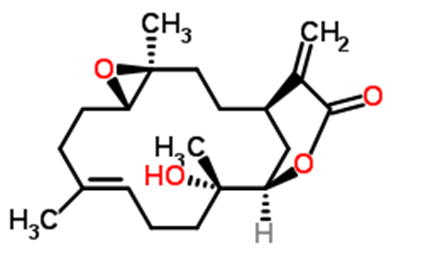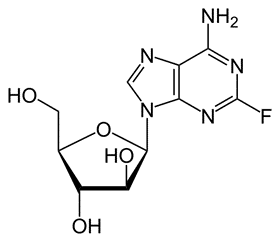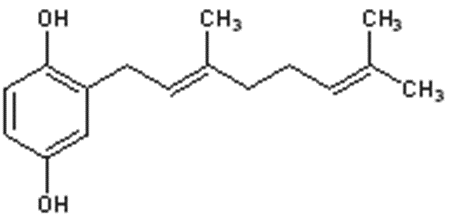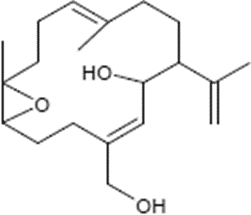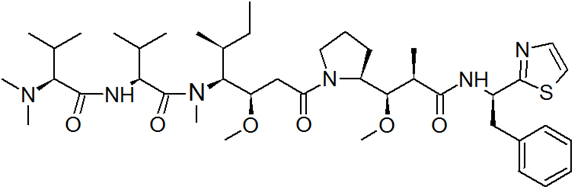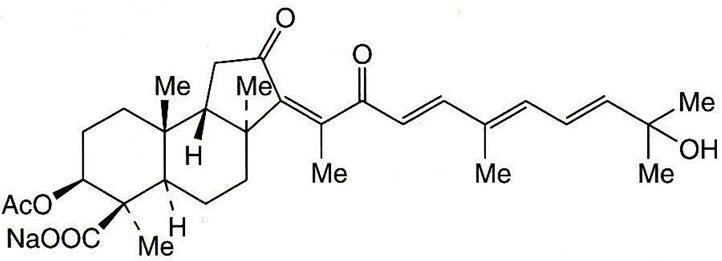General methods of isolation and purification of anticancer agents of marine origin
Objective
At the end of this lecture, students will be able to:
• Discuss the general methods of isolation and purification
• Discuss the different sources of anticancer agents of marine origin
General methods of isolation and purification of anticancer agents
• Most of the compounds isolated so far are lipid soluble
• Recently many water-soluble compounds have been isolated and the important steps in the water-soluble compounds include
Preparation of extracts
• As the compounds are polar, aqueous media or strongly polar solvents like methanol are to be used for extraction
• One of the major problems is the bacterial and fungal growth which often degrades the active components
• Moreover they give false positive results in bioassays due to endotoxins produced by the microorganisms
• Addition of alcohol or if permissible fungicides like sodium azide will help to prevent bacterial growth
• If the heat does not destroy the activity, brief heating or autoclaving may alleviate the problem considerably
• Organisms themselves can be boiled prior to extraction
• Concentration of the aqueous extracts is also difficult as prolonged heat may cause destruction of activity; hence vacuum concentration or freeze drying is adopted
Desalting
• It is the most important and often the most difficult process
• The presence of large amounts of salts interferes in chromatographic separation and also in bio assays
• Desalting gels or membranes used in biochemical preparations are not generally suitable as the difference in molecular size of the compounds and salts are not much different
• If the compounds are soluble and stable in methanol, crude desalting can be done by extracting the freeze-dried material with absolute methanol
• Desalting can be done with small molecular compounds (gels) with small matrices such as Sephadex G 10 or biogel P2
• If the compound is reasonably hydrophobic, nonionic resins such as XAD-2, XAD-7 polyethylene or polypropylene powder and porous polyethylene type resins can be used
• These resins often retain or retard the elution of organic molecules
• Adsorption on active charcoal is also sometimes effective for rough desalting
Fractionation
• Water soluble components are present in minute quantities
• Isolation of such components is very difficult
• Different methods which can be used are
Gel and ultrafiltration:
• These are effective for both rough and fine fractionation (through membranes)
Ion exchange chromatography:
• Used when the compounds are ionic and their stability on the resin and in buffer solutions are known
• Most effective method for the separation of water-soluble components
• Choice of resin is very important; strong resins may not be suitable
Reverse phase columns
• Various hydrophobic stationary phases are used with a proper combination of solvents like methanol and acetonitrile and by using buffer
• For the separation of polar and ionic components the use of buffers with appropriate pH and ionic strength gives good results
• Major problem is the recovery of small amounts of compounds from the buffer solution and can be easily avoided by using volatile buffer
• Volatile buffer can be easily removed by vacuum evaporation or freeze drying
Examples:
• Ammonium carbonate
• Ammonium acetate
• Pyridine- aetic acid
• Pyridine- aetic acid – picoline
• Pyridine- aetic acid – 2, 4, 6 collidine
Large amounts are required and hence used in final
purification stage
Molecular filtration and adsorption with pressure chromatography
• These are porous matrices which possess both molecular filtration, adsorption capabilities and withstand high pressure
• Examples are bonded silica with various pore size (TSK-125, TSK-250, TSK-400), Styrene divinyl benzene copolymers with adsorptive characters and pore characteristics (Hitachi gel 3000 series)
Combination of ion exchange and size exclusion chromatography
• Attachment of ion exchange of capabilities of matrices of various pore size provides very powerful separation effects; eg. DEAE sephadex and carboxy methyl cellulose
• Supports with functional groups on a variety of matrices are available
• In most cases the actual separation is done using ion exchange, size exclusion and hydrophilic and hydrophobic interaction
Common fractionation scheme for water-soluble compounds
• Freeze dried sample + Methanol
• Strongly acidic resin eluted with NaOH to give basic compounds
• Elute
• Made acidic and/ neutral
• Strongly basic resin; eluted with NaOH for acidic substances; neutral compounds retained
Anticancer or cytotoxic compounds
• National Cancer Institute (NCI) and National Sea Grant Office (NSGO) have discovered thousands of pure and semi pure compounds derived from marine origin with anticancer activities
• These compounds exhibited good activities in cell lines; besides, in vivo actions against both malignant tumors and leukemias in various animal models
• The various classes includes, macrolides, dipeptides and miscellaneous compounds etc
Cembranes
• Cembranoids – 14 membered cyclic diterpenes obtained from a wide variety of soft corals and contain exocyclic lactone as their integral part
Sinularin
• Sinularin is obtained from Sinulaira flexibilis
Crassin acetate
• It is obtained from Pseudoplexaura porosa (Caribbean gorgonian)
• Crassin acetate was observed to be comparatively inert to mammalian tissue system but extremely cytotoxic to human leukemic as well as Hella cells in vitro and mouse fibroblasts
Cytarabine (Ara-C, alexan, Arabitin, Aracytine, Cytarbel, Cytosar, U19920, CHX-3311, Aracytidine)
• Cytarabine is a synthetic compound exclusively based on the moieties present in the carribean sponges (spongosine, Spongogouridine)
• Cytarabine is indicated in both adult and childhood leukemia
• Used specifically in acute granulocytic leukemia; more potent when combined with thioguanine and daunorubacine
• Potent anti-neoplastic and antiviral agent
• Used in the treatment of acute myclogenous leukemia and human acute leukemia
Fludarabine (2-Fluorovidarabine; 2F-Ara-A)
• Used as antineoplastic agent
Aplysistatin
• It is obtained from the Sea hare, Aplysia angasi
• Used as antineoplastic agent
Non lactonic cembranoid
• These don’t have lactone moiety and do posses cytotoxic actions
Geranylhydroquinone (Geroquinol, Geranyl-1,4 benzenediol)
• It is obtained from the chloroform extract of Alpidium species
• Found to be cytotoxic to leukemia and mammary carcinoma
• Employed as radio protective agent
Asperidol
• It is obtained from gorgonian coral
• Antineoplastic agent
Macrolides – Bryostatins
• Obtained from bryozoans – Bugula neritina
• Also obtained from tunicates and sponges
• Triggers activation and differentiation of peripheral blood cells from lymphocytic leukemia patients
• Activates Protein kinase C (PKC)
Macrolides – Dolastatins
• Obtained from sea hare, Dolabella auricularia
• Group of cyclic and linear peptides and depsipeptides – Dolastatins
• Compounds includes Dolastatin 10, Dolastatin H, isodolastatin etc
Polypropionates
• Auripyrone A and B from D. auricularia
• Ecteinascidin 743 from tunicates Ectenascida turbinate (Tunicates)
From Sponges
• Niphatesine D from Nimphates speices
• Globostellatic acids, isomalabaracane triterpenes from Stellatta globostellata
General methods of isolation and purification Summary
• Isolation – Preparation of extracts, desalting
• Purification – Gel and ultra-filtration, ion exchange chromatography, reverse phase, size exclusion chromatography
• Antitumours compunds – uncluse sinularin, crassin acetate, cytarabine, fludarabine, aplysiatatin, geranylhydroquinine, asperidol, bryostatins, dolostatins, polypropionates etcc

